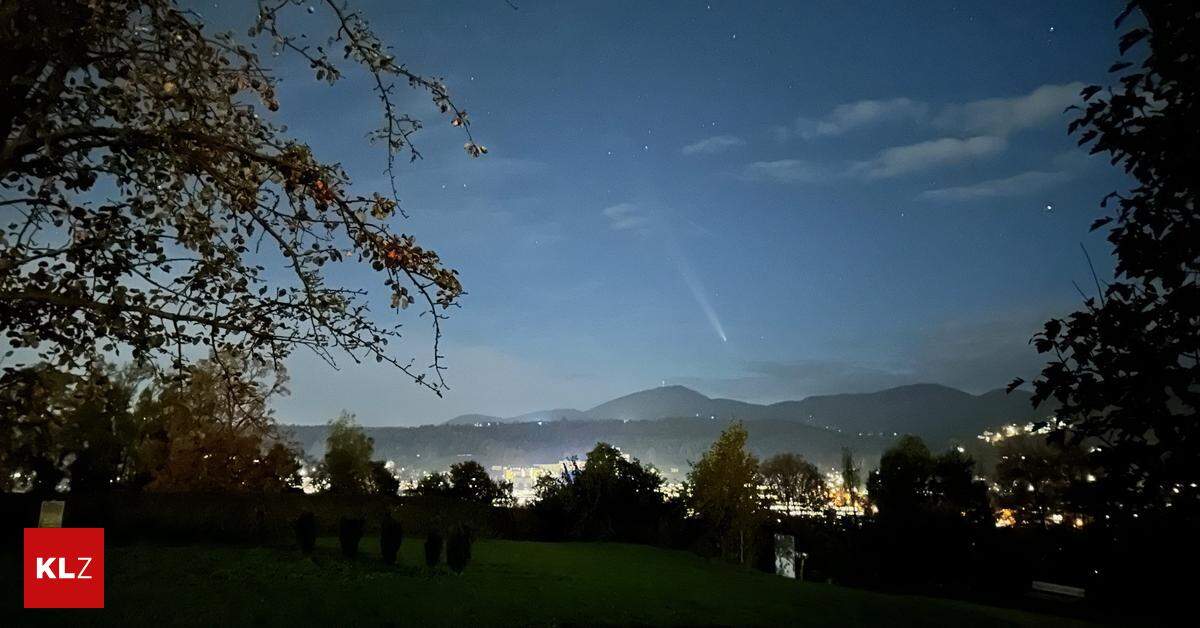According to the Vienna Association for Astronomy (WAA), after its peak visibility in the past few days, the comet “C/2023 A3 Tsuchinshan-Atlas” is now declining in this regard. After the weather in most parts of the country has been stingy recently with evening viewing windows, the chances of a clear observation of the event, which will coincide with Thursday’s “super full moon”, are now dwindling.
The brightness of the comet, especially in the Southern Hemisphere, before it began to be seen at our latitudes (October 12th), “in the last two days has increased by a good amount of two magnitudes, that is to say a factor of six , has fallen. It is exactly in line with the predictions,” WAA boss Alexander Picard told APA.
On October 10th, the “Suchinshan Atlas” more or less stopped between the Earth and the Sun. The sunlight released a corresponding amount of dust from the comet, which produced the characteristic tail and a lot of brightness: “The comet is now so far from the Sun that this effect is no longer relevant for observation from Earth. It has returned to its nominal brightness.
Photos from our reader reporters
It is now becoming difficult for the untrained observer to see the astronomical phenomenon with the naked eye. However, for the rest of the month it will be “a very interesting object for amateur astronomers’ telescopes and cameras in the evening sky in the west-southwest”. At least in large parts of Europe, enthusiasts have certainly not been favored by the weather recently, Picard stressed.
“Super Full Moon” on Thursday
Tomorrow, Thursday, in addition to the darkening “Suchinshan Atlas”, the so-called “Super Full Moon” invites you to view the evening sky. The latter is in the southeast at this time. The true full moon will be reached at 1:26 pm (CEST) on Thursday, when Earth’s satellite will come within 357,174 kilometers of its planet. For comparison: if it’s particularly far, the distance might be 406,000 kilometers.
No luck with the weather on Thursday
According to Geosphere, most of Styria will have cloudy skies with occasional light drizzle or rain. Sunny at times with southwesterly winds only north of the main Alpine range. Also densely cloudy in Carinthia.

